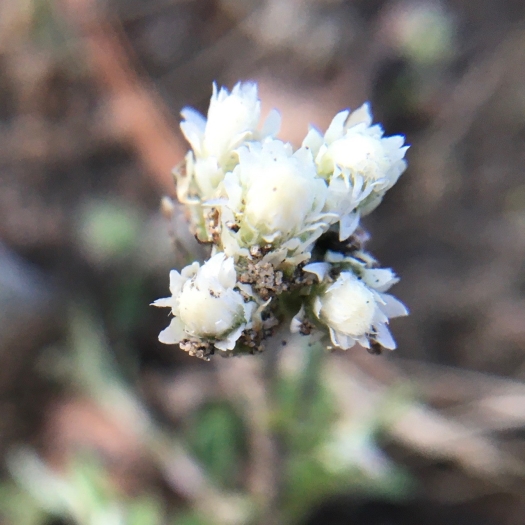Howell’s Pussytoes
(Antennaria howellii)
Howell’s Pussytoes (Antennaria howellii)
/
/

Annie Bélair
CC BY 4.0
Image By:
Annie Bélair
Recorded By:
Copyright:
CC BY 4.0
Copyright Notice:
Photo by: Annie Bélair | License Type: CC BY 4.0 | License URL: http://creativecommons.org/licenses/by/4.0/ | Rights Holder: Annie Bélair | Publisher: iNaturalist | Date Created: 2021-05-02T23:15Z |































Estimated Native Range
Summary
Antennaria howellii, commonly known as Howell’s Pussytoes, is an evergreen perennial herb native to a variety of habitats including open woodlands, grasslands, and alpine regions across much of the Northern United States and Southern Canada. It typically forms basal rosettes with leaves that have woolly white undersides, and it propagates largely through clonal growth. The plant produces flowerheads in May, which are borne on stems 15–35 cm tall, with smaller, slender leaves 1–4 cm long. The flowers are inconspicuous, with creamy to white colors that are attractive to pollinators. Howell’s Pussytoes is often found in the understory of pine stands and other light forests.
Howell’s Pussytoes is valued for its ground-covering ability and low maintenance requirements. It is drought-tolerant and thrives in full sun to part shade, making it suitable for rock gardens, border fronts, and naturalized areas. It is also used in ecological landscaping for its ability to attract butterflies and other beneficial insects. Gardeners should note that while it prefers well-drained soils, it can tolerate a range of soil types, from sandy to loamy. This plant is not commonly afflicted by diseases or pests, but it can spread aggressively in favorable conditions, so it may require management to keep it contained.CC BY-SA 4.0
Howell’s Pussytoes is valued for its ground-covering ability and low maintenance requirements. It is drought-tolerant and thrives in full sun to part shade, making it suitable for rock gardens, border fronts, and naturalized areas. It is also used in ecological landscaping for its ability to attract butterflies and other beneficial insects. Gardeners should note that while it prefers well-drained soils, it can tolerate a range of soil types, from sandy to loamy. This plant is not commonly afflicted by diseases or pests, but it can spread aggressively in favorable conditions, so it may require management to keep it contained.CC BY-SA 4.0
Plant Description
- Plant Type: Herb
- Height: 0.5-1.3 feet
- Width: 0.192-0.5 feet
- Growth Rate: Moderate
- Flower Color: White
- Flowering Season: Spring, Summer
- Leaf Retention: Evergreen
Growth Requirements
- Sun: Full Sun
- Water: Low
- Drainage: Fast
Common Uses
Bee Garden, Bird Garden, Butterfly Garden, Deer Resistant, Drought Tolerant, Low Maintenance, Showy Flowers, Street Planting
Natural Habitat
Open woodlands, grasslands, and alpine regions across much of the Northern United States and Southern Canada
Other Names
Common Names: Everlasting , Small Pussytoes , Antennaire De Howell
Scientific Names: Antennaria howellii , Antennaria russellii , Antennaria howellii var. howellii , Antennaria howellii f. howellii , Antennaria isabellina , Antennaria spathulata var. continentis
GBIF Accepted Name: Antennaria howellii Greene